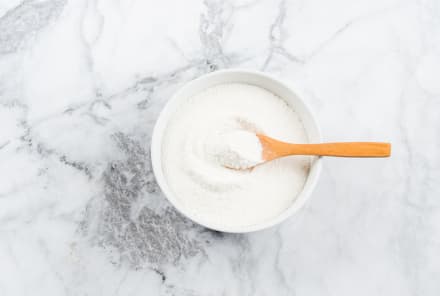Advertisement
Most parents spend lots of time thinking about what goes into their children's mouths — but little to no time thinking about what comes out the other end.
As an integrative pediatric neurologist, I'm often the first doctor to have even asked about their child’s stool, so parents are genuinely shocked by the suggestion that it might hold secrets to the problems in their bodies and brains.
But more and more studies now show that what’s happening in the gut can affect what’s happening in the body and brain, and vice versa. For example, an unhealthy gut can manifest as symptoms like anxiety and migraines. Even though it’s waste, stool is an external reflection of what’s happening inside of our children’s bodies — from how their bodies interact with the food they eat to whether their gut microbes are in balance.
If your child has a healthy gut and digestion, here's generally what you should notice: Your child poops at least once a day, and it should take under 5 to 10 minutes between entering to exiting the bathroom (of course, bringing a book or a device might artificially increase toilet time). The stool should come out easily, without strain or pain, be brown and shaped like a tube or banana, and clean up easily. It should flush easily — no clogging the toilet or sticking to the basin. And while there may be an odor for a short period of time, it shouldn’t linger for long after the toilet is flushed. Gas, burps, and stomachaches should be minimal.
What else should you know? Here are a few common examples of what your child’s stool might be telling you about their health, and a few easy ways to respond:
1. There's undigested food in the stool.
Digestion starts with careful chewing. Does your child have time to eat in an unrushed way — or is he or she always running to school, the next class or activity, or bedtime? Proper digestion won't happen if eating is rushed. Undigested food may also indicate that your child lacks sufficient stomach acid to break down food.
What to do: Try to set aside ample time for peaceful meals that encourage better digestion. To safely stimulate acid, I often recommend is with a good quality, gentle bitter tonic to my patients, which stimulates stomach acid production to aid digestion, among other benefits. Of course you may want to speak with your medical practitioner before trying this treatment.
2. Your child is constipated.
This can present as any of the following: infrequent, hard, or painful stools; stool that comes out in balls; or a sense of incomplete emptying after moving the bowels.
Constipation can be caused by many culprits. It can be a manifestation of food reactivity (such as dairy or gluten). It could also be from eating too many processed foods, and not enough fresh produce (especially vegetables) or unprocessed grains (less bread, cereal, and crackers and more quinoa, unprocessed oatmeal, and sprouted rice). Or, it can be caused by chronic stress, as movement of the digestive tract is shut down by the fight-or-flight response.
What to do: To treat constipation, keep careful track of your child's stool habits and note any foods that may be interfering with healthy digestion. Triphala (an ayurvedic combination of three fruits) and probiotics (beneficial bacteria) may also help.
3. There's often gas, bloating, or loose stool.
We may not want to hear it, but too much sugar in the diet can cause gas, bloating, or loose stool. Sources of sugar can be obvious like soda or candy, or less so, as with fruit juice, sweetened yogurts, or sometimes excessive amounts of fresh fruit.
What to do: These symptoms may also indicate that gut flora is significantly out of balance, so incorporating foods naturally rich in beneficial bacteria like fermented cucumbers or sauerkraut or kefir may help.
4. The child's stool floats and has a sheen.
This often indicates that fat isn't getting absorbed effectively in the digestive tract. But it’s not necessarily because your child is eating too much fat — remember, kids need a lot of healthy fats in the diet for immune system and brain development.
The gallbladder normally adjusts to more fat in the diet by increasing production of bile, which binds fat and helps it to be absorbed. Without enough bile, fat ends up in the stool, making it float and glisten.
What to do: I often recommend dandelion root tea as a beverage or in soup to help stimulate bile production and release, and it may help the body absorb fat more efficiently.
Watch Next
Enjoy some of our favorite clips from classes
Enjoy some of our favorite clips from classes
What Is Meditation?
Mindfulness/Spirituality | Light Watkins
Box Breathing
Mindfulness/Spirituality | Gwen Dittmar
What Breathwork Can Address
Mindfulness/Spirituality | Gwen Dittmar
The 8 Limbs of Yoga - What is Asana?
Yoga | Caley Alyssa
Two Standing Postures to Open Up Tight Hips
Yoga | Caley Alyssa
How Plants Can Optimize Athletic Performance
Nutrition | Rich Roll
What to Eat Before a Workout
Nutrition | Rich Roll
How Ayurveda Helps Us Navigate Modern Life
Nutrition | Sahara Rose
Messages About Love & Relationships
Love & Relationships | Esther Perel
Love Languages
Love & Relationships | Esther Perel
What Is Meditation?
Box Breathing
What Breathwork Can Address
The 8 Limbs of Yoga - What is Asana?
Two Standing Postures to Open Up Tight Hips
How Plants Can Optimize Athletic Performance
What to Eat Before a Workout
How Ayurveda Helps Us Navigate Modern Life
Messages About Love & Relationships
Love Languages
Advertisement

This Little-Known Supplement Helps Women Sleep & Decreases Signs Of Depression
Molly Knudsen, M.S., RDN

Want To Be Metabolically Healthy? New Study Shows An Underutilized Approach
Molly Knudsen, M.S., RDN

This Little-Known Supplement Helps Women Sleep & Decreases Signs Of Depression
Molly Knudsen, M.S., RDN

Want To Be Metabolically Healthy? New Study Shows An Underutilized Approach
Molly Knudsen, M.S., RDN














